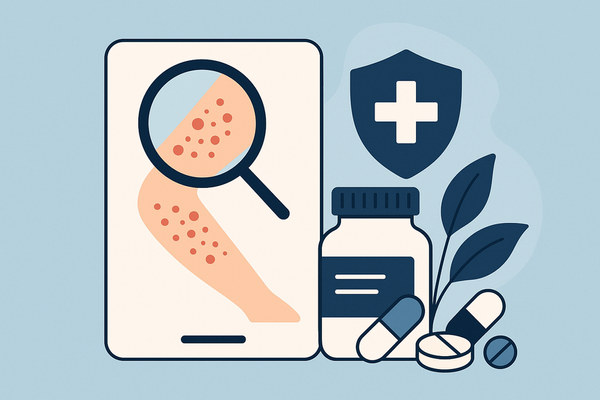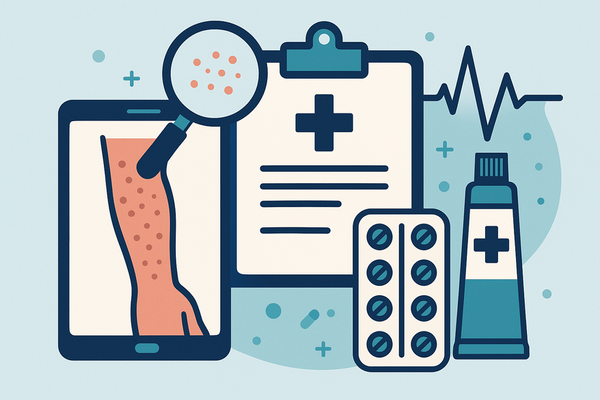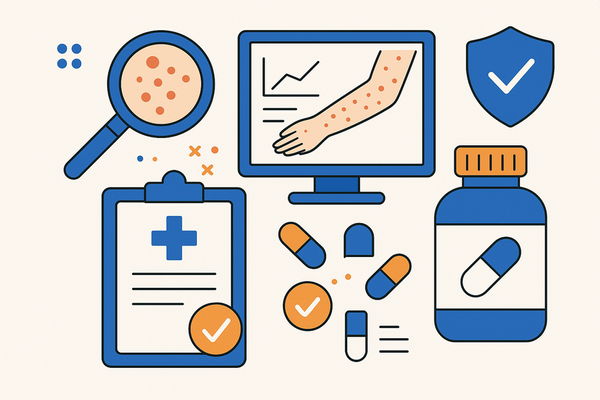Understanding Risk Assessment in AI Reports: A Practical Guide
Learn how to interpret AI-generated risk assessments in reports. Enhance clinical decisions with insights on accuracy, bias, and best practices.
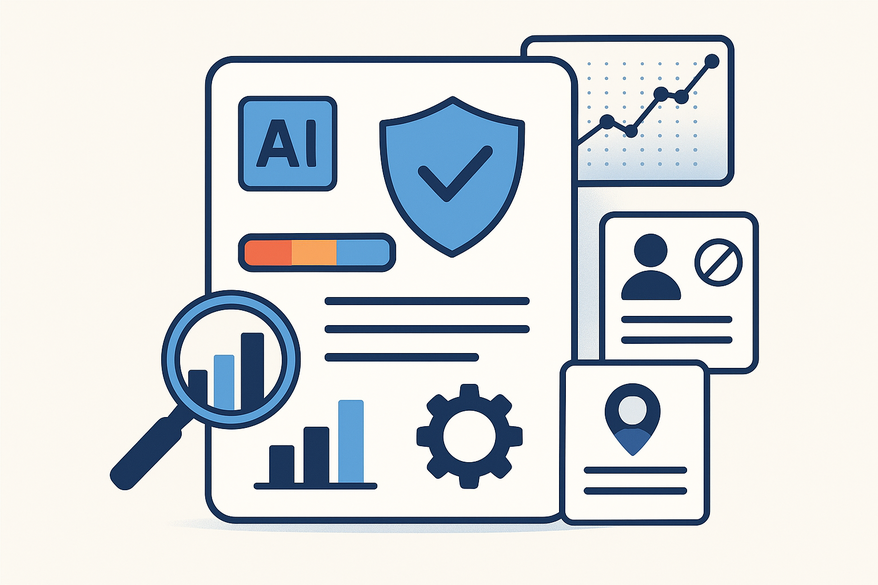
Estimated reading time: 10 minutes
Key Takeaways
- AI risk assessments can accelerate diagnosis with quantitative scores.
- Human oversight is essential to contextualize AI outputs and catch biases.
- Transparency in input data and algorithms boosts trust and accuracy.
- Structured reviews and checklists help validate AI recommendations.
- Awareness of bias ensures fair outcomes across diverse patient groups.
Table of Contents
- Background Information on AI Risk Assessment
- Key Concepts in Risk Assessment for AI Reports
- Interpreting AI-Generated Rash Reports
- Considerations for Accuracy & Bias
- Practical Tips & Best Practices
- Conclusion
- Call to Action
- FAQ
Section 1: Background Information on AI Risk Assessment
1.1 What Are AI-Generated Rash Reports?
AI-generated rash reports are automated analyses of dermatology images or patient data. They identify features such as:
- Asymmetry in lesion shape
- Color variation within a rash
- Border irregularities or diameter changes
These reports detect patterns too subtle for the human eye by processing thousands of images and metrics to speed up triage and diagnosis.
1.2 Defining Risk Assessment in AI Reports
Risk assessment evaluates:
- Likelihood (probability) of a clinical outcome, like malignancy
- Potential impact (severity) if the event occurs
It transforms raw model outputs into risk scores or categories (low, medium, high) for clinicians to act on.
1.3 Traditional vs. AI-Generated Reports
Traditional reports rely on human-only review, which can be:
- Qualitative and text-heavy
- Slow, with potential backlogs
- Subject to inter-rater variability
AI-generated reports offer:
- Quantitative risk scores
- Rapid pattern recognition
- Consistent metrics
However, they still require expert context and oversight to ensure reliability.
Section 2: Key Concepts in Risk Assessment for AI Reports
2.1 Fundamental Components
- Probability of risk: Numeric estimate (e.g., 0.78 equals 78% chance of melanoma).
- Magnitude of impact: Severity of the outcome (e.g., need for biopsy).
- Contextual factors: Image resolution, patient history, data completeness.
2.2 Common Metrics, Algorithms & Methodologies
- Numerical risk scores: Percentages or 1–5 scales.
- Categorical labels: Low, moderate, high risk.
- Algorithms:
- Convolutional neural networks (CNNs) for image analysis.
- Decision trees or ensemble models for patient data.
- Methodologies:
- Pattern recognition against large clinical datasets.
- Rule-based frameworks like the ABCDE rule (Asymmetry, Border, Color, Diameter, Evolving).
2.3 Indicators of Elevated Risk
- Scores above predefined thresholds (e.g., >0.7 probability).
- Alerts for irregular or ambiguous features (e.g., spiculated borders).
- Automated advice for biopsy or specialist referral.
Section 3: Interpreting AI-Generated Rash Reports
Step-by-Step Guide:
- Read the Summary Section
Identify the overall risk category (e.g., “high risk”) or numeric score. - Examine Input Data
Confirm which images and patient metrics the AI used (age, history, lesion size). - Understand the Risk Score
Distinguish probability outputs (e.g., 0.85) from categorical labels and learn how thresholds map to labels (e.g., >0.8 = high risk). - Review Recommended Actions
Note follow-up suggestions such as imaging, biopsy, or specialist consult. - Contextualize with Clinical Presentation
Cross-reference AI findings with exam results and patient history.
Example with the Skin Analysis App:
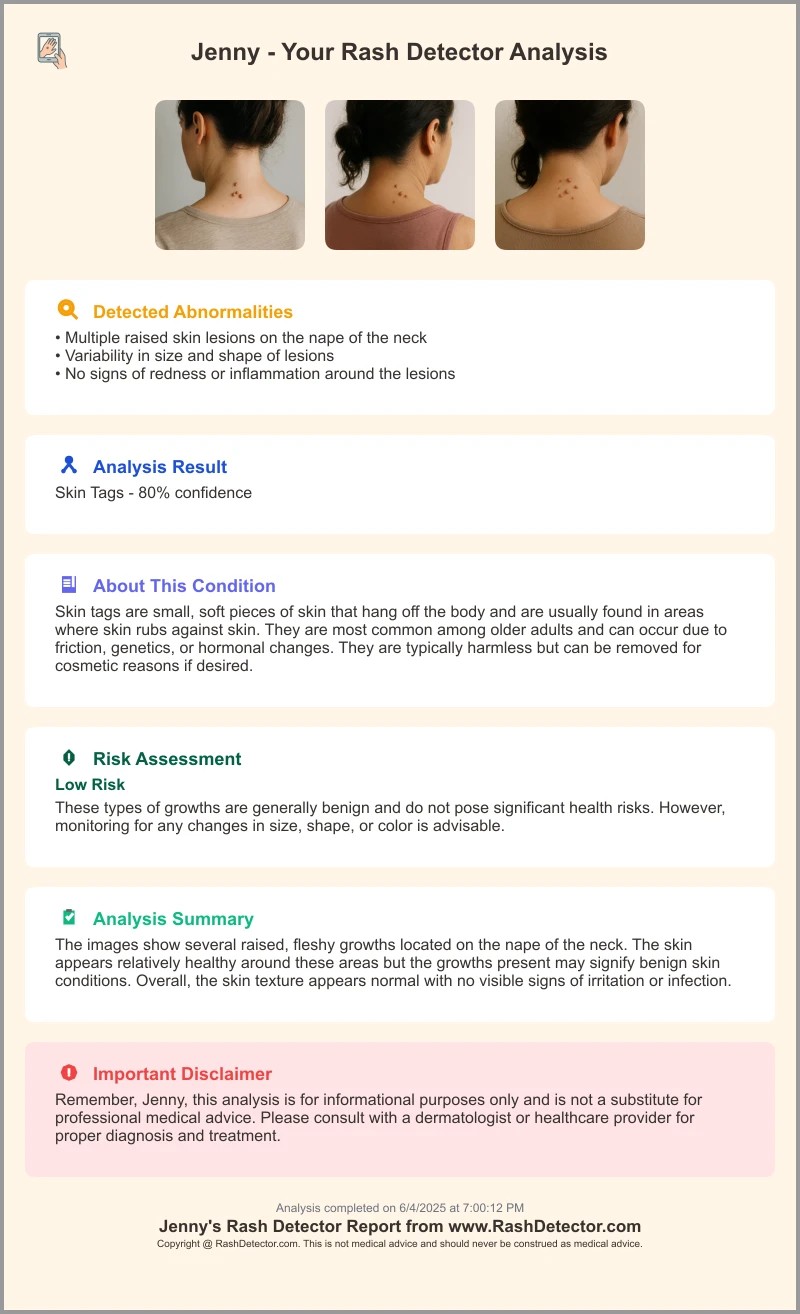
An AI report shows a 78% melanoma probability (“high risk”) highlighting asymmetry and irregular borders with a recommendation for dermatologist referral. Clinicians may:
- Order a biopsy.
- Correlate AI flags with hands-on exam.
- Decide on treatment based on combined insights.
For deeper insight on interpreting AI confidence scores, see interpreting rash diagnosis scores.
Section 4: Considerations for Accuracy & Bias
4.1 Potential Sources of Error and Bias
- Incomplete or low-quality inputs (blurry images, missing history).
- Algorithmic bias due to unbalanced training data (under-representation of certain skin tones).
- Overreliance on quantitative scores without human insight.
4.2 Impact of Data Quality & Algorithmic Limitations
- Misclassification risks: benign lesions flagged as malignant, or vice versa.
- Importance of external validation with real-world clinical datasets.
4.3 Validation & Cross-Checking Tips
- Corroborate AI findings with expert human review.
- Review original images and data to ensure alignment.
- Use alternative models or comparative algorithms when possible.
Section 5: Practical Tips & Best Practices
5.1 Treat AI as Decision-Support, Not Replacement
Adopt a human-in-the-loop approach for final decisions.
5.2 Use Structured Checklists
A comprehensive checklist should cover:
- Image quality and clarity.
- Completeness of patient demographics.
- Alignment of AI score with clinical signs.
5.3 Key Review Questions
- “Is the AI risk score consistent with my clinical findings?”
- “Are there unexplained anomalies or missing data?”
- “Has a qualified professional reviewed this report?”
5.4 Further Resources
- NIST AI Risk Management Framework for deeper guidelines.
- Frontiers in Medicine article for advanced AI dermatology insights.
- Explore AI rash detector apps for practical tools.
Conclusion
Understanding risk assessment in AI reports empowers clinicians to make safer, faster decisions in the clinic. By focusing on key metrics, recognizing limitations and biases, and keeping humans in the loop, you ensure AI serves as a powerful support tool. Applying these practical steps will boost diagnostic confidence and lead to better patient outcomes.
Call to Action
Share your experiences or questions about interpreting AI-generated rash reports in the comments below. For more discussion, visit our IOSH forum discussion and join the community conversation.
FAQ
How accurate are AI-generated rash reports?
Accuracy depends on the quality of training data and validation processes. Well-validated models can approach expert-level performance but always require human review to confirm findings.
What if AI outputs conflict with clinical observations?
Prioritize clinical judgment and investigate discrepancies. Use AI as a second opinion—re-examine images, consult specialists, or use alternative models for comparison.
Can AI replace dermatologists?
No. AI is designed to augment expertise, not replace it. It speeds up pattern recognition and risk scoring, but clinicians provide essential context, interpretation and patient communication.


